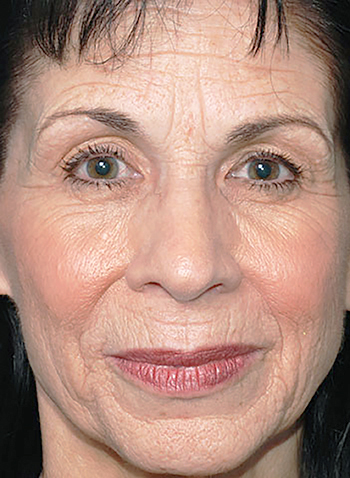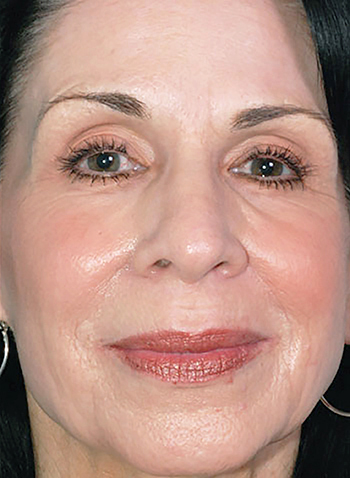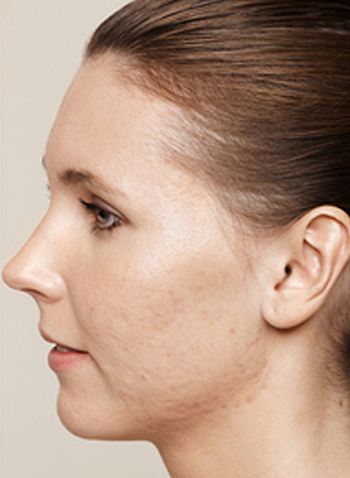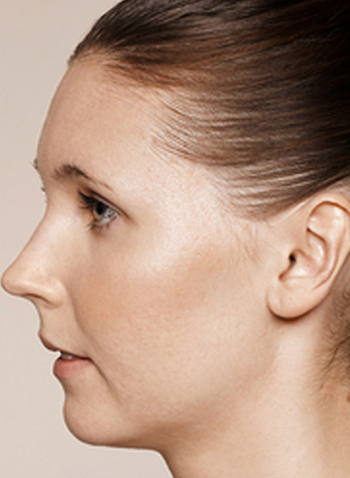
Throughout the last decade, cutaneous laser resurfacing has gained popularity among laser surgeons and the public alike. Based upon the principles of selective photothermolysis, resurfacing lasers selectively target water-containing tissue resulting in controlled tissue vaporization. Associated residual thermal injury in the dermis results in collagen shrinkage and remodeling.
Fotona Dynamis Erbium laser resurfacing system can produce high-energy light that is absorbed by water and substances in the skin called chromophores. The light is changed into heat energy, and the heat then destroys (vaporizes) thin sections of skin, layer by layer. As the wounded area heals, new skin grows to replace the damaged skin that was removed during the laser treatment.* Some lasers only tighten the skin by heating it but do not destroy the skin.*
Laser resurfacing is usually very precise and causes little damage to the surrounding skin and tissue.* It is done most often on the face, but it may be done on the skin in other areas of the body. The hands, neck, and chest may be avoided because the skin in these areas does not heal as well as it does in other areas. It tends to thicken and scar as a result of the laser treatment.
*Results may vary from individual to individual.




*Disclaimer: All photographs represent one person’s experience, and results may vary for each patient. All photographs are of actual patients from Instant Laser Clinic. The visible change in these photographs has occurred as a result of the procedure/s undertaken. Some before and after photos shown are not exact, in that they vary in light, contrast, clothing, background, distance from camera, hairstyle and make-up.
CONTACT US
FREQUENTLY ASKED QUESTIONS
Newer laser methods
Laser resurfacing is usually very precise and causes little damage to the surrounding skin and tissue.* It is done most often on the face, but it may be done on the skin in other areas of the body. The hands, neck, and chest may be avoided because the skin in these areas does not heal as well as it does in other areas. It tends to thicken and scar as a result of the laser treatment.
Newer methods of laser resurfacing cause fewer complications and have faster recovery times.*
These methods include:
› Fractional laser skin resurfacing, which treats microscopic columns of skin. The treated areas of the skin are surrounded by untreated areas, which results in visible improvement without much bleeding or scabbing.*
› Superficial erbium: YAG laser resurfacing, which is a mild laser treatment method. This works best for minor wrinkles and other skin problems.*
› Infrared laser resurfacing, which targets deeper layers of the skin with heat to smooth and tighten the skin.*
Individual results may vary.
Erbium Yag Laser Resurfacing
The areas to be treated are cleaned and a topical numbing cream will be applied over the area being treated to reduce the mildly tingling hot sensation.
The laser is passed over the skin, emitting pulses that last a millisecond. Between passes with the laser, the skin will be wiped with water or a saline solution to cool the skin and remove tissue that the laser has destroyed. The number of passes required depends on how large the area is and what type of skin is being treated. Thin skin around the eyes for instance, requires very few passes with the laser. Thicker skin or skin with more severe lesions requires a greater number of passes.
The pulses from the laser may sting or burn slightly, or you may feel a snapping sensation against your skin. When the treatment is finished, the area is covered with a clean dressing or ointment.
Why It Is Done
Laser resurfacing may be used to improve the appearance of or remove:
› Lines and wrinkles, sun-damaged skin*
› Superficial scars caused by acne or chickenpox, or trauma that are not growing or that are getting thicker.*
› Color (pigment) changes or defects in the skin, such as live spots (lentigines), port-wine stains, or café-au-lait spots.*
People with lighter skin who do not get a lot of sun exposure after the procedure tend to have the best results.* People with darker skin may benefit from laser resurfacing, but their skin may not heal as well.
You may not be a good candidate for laser resurfacing if you:
› Have had skin color changes, scarring, or thickened tissue (fibrosis) as a result of earlier treatment.*
› Have a skin or blood immune disorder that could make healing more difficult.*
› Have a history of abnormal scarring (keloid or hypertrophic scars).*
› Are currently using Roaccutane (a drug used to treat acne) or have used it within the last 6 to 12 months. This increases the risk of scarring after the procedure.*
› Have a bacterial or viral infection of the skin.*
*Individual results may vary.
What To Expect After Surgery
The time needed for healing and recovery after laser resurfacing varies according to the size and depth of the treated area. Someone who has the full face resurfaced, for example, will have a longer recovery time than someone who has only a small area of skin treated.
Typically, the wounded area will be pink, tender, and mildly swollen for at least several days. Cold packs and non steroidal anti inflammatory drugs such as Aspirin or Ibubrufen may help reduce swelling and pain.
Proper care of the treated area while the skin is healing is extremely important.
› DO not wet the area for at least 24 hours and avoid peeling off the dead and flaky skin as it may cause scarring. . Avoid soaps and perfumes.
› Change the ointment or dressing on the treated area such as Bepanthen cream to keep the area moist and promote healing.
› Avoid sun exposure and, after peeling has stopped, use sunscreen every day. New skin is more susceptible to sun damage.
› You may clean your skin and get rid of the dead and flaky skin by damping your hands into a half -full cold glass of water, mixed together with a half -white vinegar and running it gently over your skin to slowly peel off and dissolve the dead skin without damaging and irritating your skin further.
› A strong hydrating Hyaluronic based serum or moisturizer is suggested to nourish and rejuvenate your skin.
Tell your therapist if you have had cold sores in the past. You may use an antiviral drug to prevent infection if you are receiving treatment around your mouth.
Side Effects
Side effects and risks of laser resurfacing may include:
› Swelling, itching, crusting, and tenderness. These are expected, temporary effects of laser resurfacing.
› Redness (erythema). Normally this lasts 6 to 12 weeks, but it may last up to 6 months in some people. Some people may turn red or flush during stress or exertion more easily than they used to, for up to a year.
› Color (pigment) changes in the skin. In 5-10% of people, especially those with darker skin tones, the treated skin is darker than the surrounding skin. Bleaching or peeling of the skin can help lighten the skin for a more uniform skin tone, and the skin may fade on its own over time. A small number of people have a loss of color in the treated skin 6 to 12 months after the procedure.
› Skin irritation, including acne flare-ups in people who are prone to acne.
› Bacterial, viral, or fungal infection of the skin. Infection may affect the rest of the body also.
› Scarring (rare). Scarring may be improved with medicine.
At all procedures, up to 8 weeks of extreme care and sun protection are advised. Must apply Bepanthen and anti-biotic cream to smooth, moisturize and protect the skin from any possible infection.
cost
HeadTwinLight skin rejuvenation
Face & Neck | $850
Face | $600
Neck | $400
We do recommend a course of six treatments, every 4-6 weeks.
Laser Peel (Fractional Erbium Skin Resurfacing)
Face & Neck | $750
Face | $485
Neck | $400
We do recommend a course of 3-6 treatments, every 4-6 weeks.
Medium ablative resurfacing
Face | $1200
Eyes | $450
Mouth region | $550
We do recommend a course of 1-2 treatments, every 6 months.
Subscribe
to our newsletter
Join our email list and be the first to know about news and promotions


